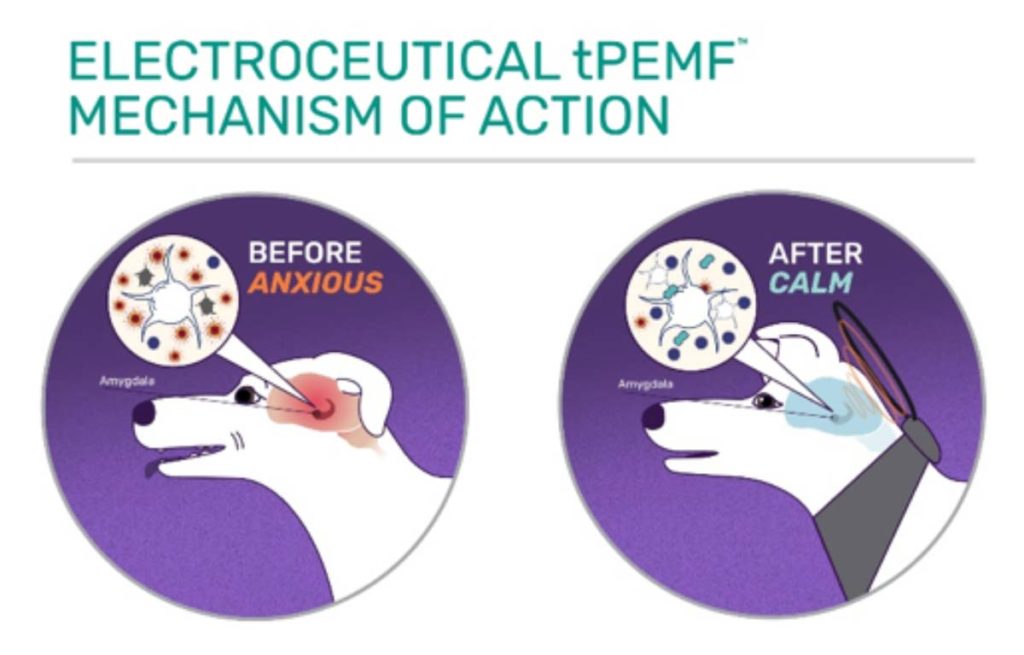
How Calmer Canine® Works
The Electroceutical Targeted Pulsed Electromagnetic (tPEMF™) Mechanism of Action
Calmer Canine® Mechanism of Action

Check out a video of the mechanism of action.
Calmer Canine works by sending microcurrents of targeted pulsed electromagnetic (tPEMF) signals to the brain. These tPEMF signals were specifically developed by a team of veterinarians and neurobiologists to target the anxiety center in the brain.
tPEMF signals generated by Calmer Canine work at the cellular level by controlling the activity of the microglial cells that are responsible for commanding the activities of other cells. tPEMF signals enhance the binding of Calcium to Calmodulin; this activates the production and release of Nitric Oxide (NO).
NO is a very important molecule in the body. It was named “Molecule of the Year” in 1992. A Nobel Prize was awarded to a team of three scientists in 1998 for their discovery of the role that NO plays in cellular signaling and cell metabolism. The level of NO produced by the body in a specific area, such as the amygdala, controls the activity of other cell signaling molecules.
The increase in NO produced by the body as a result of the cellular reaction enhanced by the tPEMF signals causes an INCREASE in protective anti-inflammatory mediators and a DECREASE in harmful pro-inflammatory mediators (e.g. IL-6; and TNF-). This results in a rebalancing of inflammatory mediators and a reduction in inflammation.
tPEMF signals also cause the neural cells to produce “feel good” substances such as serotonin, dopamine, and endorphins.
The net effect of the reduced inflammation is protection from oxidative stress and a reduction in neuronal cell death.
Clinically, these cellular effects of the tPEMF signals translate to a reduction in the signs of anxiety, such as: less panting and pacing, less barking, howling, or whining, as well as less destruction of the home.
In Summary, tPEMF therapy with Calmer Canine allows the brain to heal and restores calm by:
- INCREASING nitric oxide (NO) production
- INCREASING production of “feel good” hormones (like endorphins)
- REDUCING inflammation
- REDUCING damage to the brain and cell death
More information about tPEMF.
Veterinarians and behaviorists with an ACAAB, CAAB, ABDBC, CDBC, CBCC-KA, CTC, PCBC, or CSAT credential may purchase as professionals
